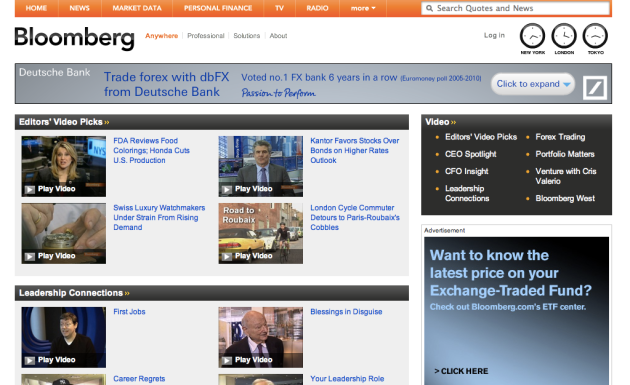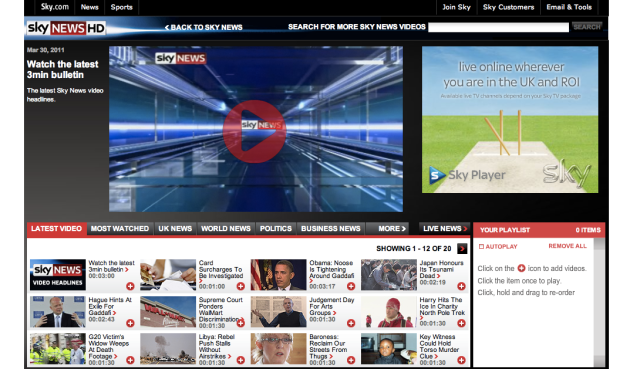I Came, I Saw, I Watched Again Online
January 17, 2011 Leave a comment
Broadcast media focus their main efforts on live broadcasts but the role of video is growing.
Consider calling a correspondent in rural Bangladesh – normally France 24’s reporter would appear via a videophone link. What about making contact with a person affected by, for example, flooding in Australia? Sky News simply used Skype and conducted a video call with a local journalist. These two examples show how video is an indispensable tool to connect with faraway contacts during live broadcasts.
All major television channels’ homepages now have a separate section dedicated to video. There are many reasons for this: to facilitate visitors to the site looking purely for video; to showcase specific clips from previous broadcast content; and to offer users extra video content that may not have been broadcast or seen, for example extended highlights of an interview of which only a short excerpt was used on TV.
Users love watching content but the nature of today’s working environment means that few have the time to sit down and consume TV for long periods of time. This is one of the reasons networks have regular updates and repeat headlines (albeit edited and re-written) – the audience changes every half-hour. On the way to work, on the train or the bus, those users who watched TV news for 30 minutes with their breakfast can watch a longer video package on the mobile versions of channels’ websites.
And when they are back at a computer they can return either to watching a live stream of the channel itself or shorter videos on specific items from the homepage.
Video has immediacy about it and the broadcast media appreciate that because, after all, their business is based on breaking news, constant updates and beating rivals to scoops the minute they occur. Two or three-minute updates in video format are popular with the BBC and Sky, offering users the news quickly without having to scroll through lots of different pages or watch an entire televised bulletin.
Finally, the fact that users can upload their own content adds a feeling of interactivity and openness that shows the public that they can create the news as well – not just watch it. And if they miss it, they can watch the news again and again (and their own clips) through the video portals on the channels websites.



